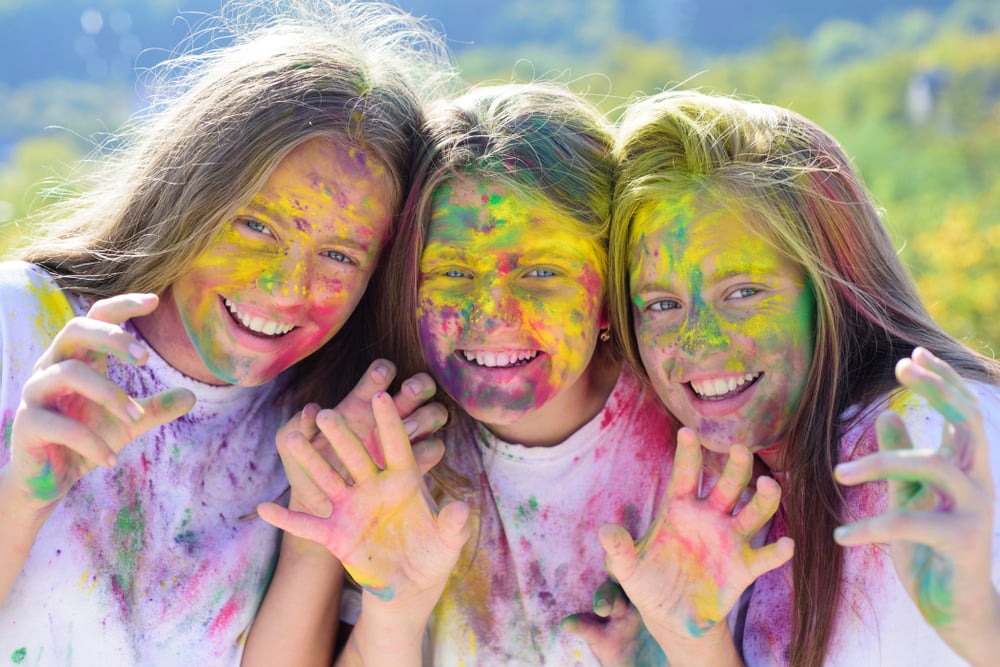Section 2: The Psychology of Colors in Action
Introduction
Color isn’t just about aesthetics; it’s a language of emotions. In this section, we dive into the fascinating realm of color psychology, discovering how different colors can evoke feelings and influence the ambiance of your home. Let’s explore the profound power of colors to transform your living space into a haven of emotion and self-expression.
Watch the video below for a short introduction to the psychology of colors in action.
Introduction to Color Psychology: The Language of Emotions

Color psychology is the art and science of understanding how colors affect human emotions, behavior, and well-being. Colors have the remarkable ability to influence our moods and perceptions. They can evoke calm, energy, happiness, or even sadness. In this section, we’ll dive into the emotional impact of various colors. You’ll learn how colors affect your emotions, creativity, and appetite, giving you insights into creating a home environment that resonates with your desired emotional states.
Warm vs. Cool Colors: The Temperature of Emotion
Warm and cool colors act like the temperature of your home’s emotional climate. Warm colors, such as fiery reds and sunny yellows, exude energy, passion, and intimacy. They can make a room feel cozy and inviting, ideal for spaces where you want to foster social interactions and creativity. In contrast, cool colors like tranquil blues and soothing greens create a sense of calm, relaxation, and serenity. They work wonders in bedrooms and spaces dedicated to unwinding. We’ll explore the distinction between these two color groups and how to use them to set the desired emotional tone in your living spaces.

Cultural Significance: Colors Across Borders

Colors are far from universal; their significance varies widely across cultures. Different societies and traditions ascribe unique meanings to colors. For example, in some cultures, white symbolizes purity and peace, while in others, it represents mourning. Understanding the cultural significance of colors broadens your perspective and guides you in crafting a home environment that respects and celebrates your cultural identity. We’ll briefly touch on these cultural nuances, helping you appreciate the broader context of color choices and their cultural resonance.
Self-Expression: Your Home, Your Colors
Your choice of colors in your living space is a silent form of self-expression. By reflecting on your personal color preferences, you’ll unveil how your favorite colors reveal aspects of your personality and emotions. Whether you’re drawn to the passionate energy of red, the calming embrace of blue, or the warmth of earthy tones, your color choices can tell a story about who you are. This section encourages you to use colors as a canvas for expressing your individuality, creating a home that is not just aesthetically pleasing but also deeply personal and reflective of your true self. Your home becomes a visual autobiography, showcasing your unique personality and emotions.

References
- Eiseman, Leatrice. “Colors For Your Every Mood.” Capital Lifestyles, 1998.
- Birren, Faber. “Color Psychology and Color Therapy: A Factual Study of the Influence of Color on Human Life.” Martino Fine Books, 2013.
- Luscher, Max. “The Luscher Color Test.” Paperback Books, 1969.
- Gage, John. “Color and Culture: Practice and Meaning from Antiquity to Abstraction”. University of California Press, 1999.
- Finlay, Victoria. “Color: A Natural History of the Palette”. Random House Trade Paperbacks, 2004.
Further Readings
If you wish to achieve deeper insights into the emotional and psychological aspects of color, how they impact our well-being, and their practical applications in various fields, here is a list of suggested readings:
- “Emotion and Design: Attractive Things Work Better” by Don Norman
- Don Norman explores the connections between emotion, design, and usability. While not exclusively focused on color psychology, it provides valuable insights into how design elements, including color, influence emotions.
- “The Art of Color: The Subjective Experience and Objective Rationale of Color” by Johannes Itten
- This book, by a renowned color theorist, delves into the emotional and subjective aspects of color. It’s an excellent resource for understanding the psychological impact of colors in art and design.
- “Color and Human Response: Aspects of Light and Color Bearing on the Reactions of Living Things and the Welfare of Human Beings” by Faber Birren
- Faber Birren’s work is a comprehensive study of the psychological and physiological responses to color. It offers insights into the emotional and well-being aspects of color.
- “The Secret Lives of Color” by Kassia St. Clair
- This book explores the history, cultural significance, and emotional associations of various colors, offering a unique perspective on how colors have shaped our world and our perceptions.
